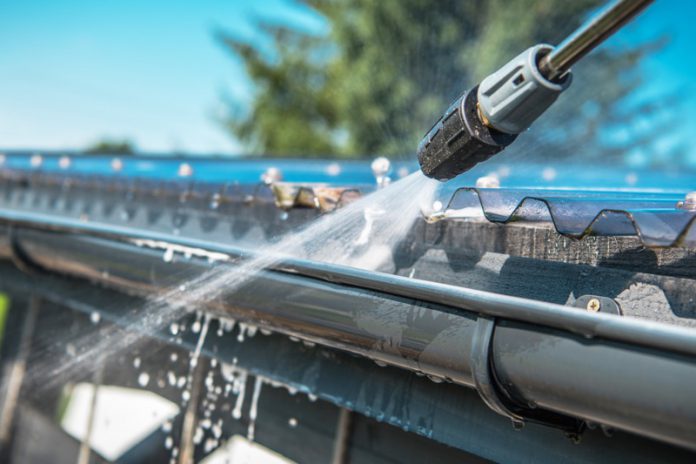Fall has arrived, and with it comes a few responsibilities around the house. Cleaning the gutters, fixing up the yard, and winterizing the home will help prevent damage while saving you money on your heating bills.
It is important that you maintain your gutters every year because they prevent flooding in the basement and damage to the attic. Thankfully, it’s not very complicated. All you will need is a ladder, a gutter scoop, a garden hose, and some understanding of how gutters work. If you need help, call a professional for gutter cleaning Toronto or near you.

Set up your ladder – safely
The first step in the gutter cleaning process is to set up your ladder. Make sure that it is leaning against a sturdy part of the home, with every leg on the ground. If it feels shaky, it’s not worth it. If you need to get onto your roof, always be facing the edge. For added safety, consider using a rope and harness and secure yourself to the roof with carabineers.
Grab your tools
Next, you will need your cleaning materials. Grab a pair of work gloves, a bucket, a wire hook, a gutter scoop, and a garden hose. If you have them, get a plumbing snake, level, and screwdriver, too. Hook your bucket onto your ladder so you can put the debris in there while you are cleaning. Put on your gloves, then start scooping. You can grab larger things, like leaves and twigs, with your hands, then use the gutter scoop to scoop everything else.
Rinse with the hose
When you’re done removing debris, turn on the garden hose and use it to rinse out the gutters. Watch the flow of the water and check if it is flowing out at the bottoms of your downspouts. If it looks like there is blockage, try using the hose to pour water up the downspout. If it is still blocked, use a plumbing snake and shake everything out. Use downspout guards to prevent future blockages. You can find these in most hardware stores.
Inspect the gutters and make repairs
Once you are done cleaning, take a moment to inspect your gutters. Gutters can warp with time and shift away from the walls of the house. Pour some water into them and see if it drains on its own. If it is stagnant, you may need to increase the slope. Your gutters should slope toward the downspouts, about one quarter of an inch every 10 feet.
Using a level, check the slope of your gutters and adjust accordingly. If it’s too straight, simply detach a few hangers and readjust them at a better angle. Then, grab the hose and reinspect.
Next, you should check that your gutters are securely attached and free of leakages. Close off any cracks you find with gutter sealant and screw your downspouts into the wall if they are loose. Be sure to use the sealant once the gutters are dry.
Get rid of mold and mildew
Finally, when you are done cleaning out the gutters and making final repairs, clean up any mold or mildew you found around them. Spray those dirty areas with a mold cleaner or solution of one part bleach and 10 parts water. Let the solution sit for about an hour or according to the manufacturer’s directions, then scrub the mold off and rinse with water.













